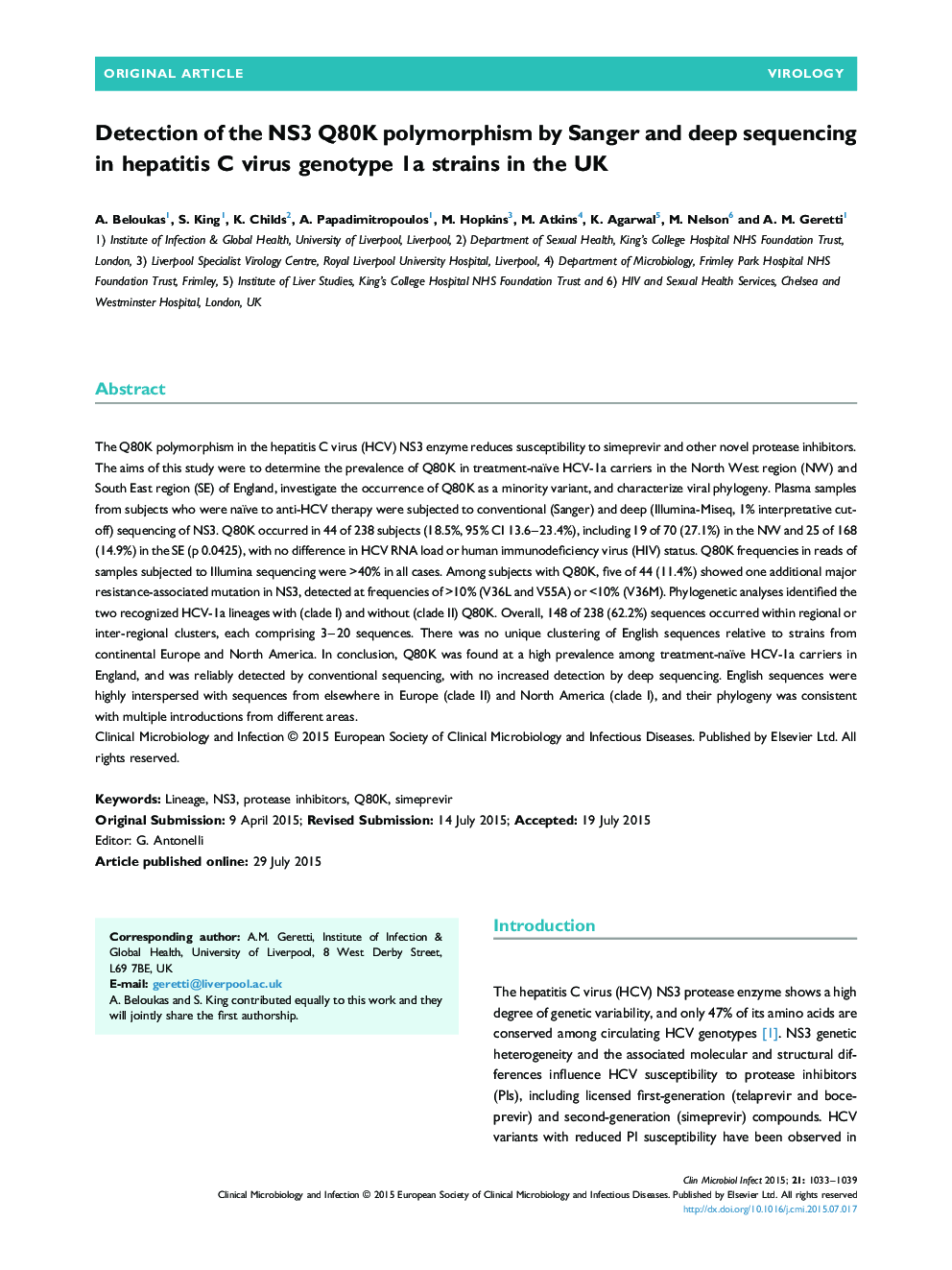| کد مقاله | کد نشریه | سال انتشار | مقاله انگلیسی | نسخه تمام متن |
|---|---|---|---|---|
| 3396419 | 1222149 | 2015 | 7 صفحه PDF | دانلود رایگان |

The Q80K polymorphism in the hepatitis C virus (HCV) NS3 enzyme reduces susceptibility to simeprevir and other novel protease inhibitors. The aims of this study were to determine the prevalence of Q80K in treatment-naïve HCV-1a carriers in the North West region (NW) and South East region (SE) of England, investigate the occurrence of Q80K as a minority variant, and characterize viral phylogeny. Plasma samples from subjects who were naïve to anti-HCV therapy were subjected to conventional (Sanger) and deep (Illumina-Miseq, 1% interpretative cut-off) sequencing of NS3. Q80K occurred in 44 of 238 subjects (18.5%, 95% CI 13.6–23.4%), including 19 of 70 (27.1%) in the NW and 25 of 168 (14.9%) in the SE (p 0.0425), with no difference in HCV RNA load or human immunodeficiency virus (HIV) status. Q80K frequencies in reads of samples subjected to Illumina sequencing were >40% in all cases. Among subjects with Q80K, five of 44 (11.4%) showed one additional major resistance-associated mutation in NS3, detected at frequencies of >10% (V36L and V55A) or <10% (V36M). Phylogenetic analyses identified the two recognized HCV-1a lineages with (clade I) and without (clade II) Q80K. Overall, 148 of 238 (62.2%) sequences occurred within regional or inter-regional clusters, each comprising 3–20 sequences. There was no unique clustering of English sequences relative to strains from continental Europe and North America. In conclusion, Q80K was found at a high prevalence among treatment-naïve HCV-1a carriers in England, and was reliably detected by conventional sequencing, with no increased detection by deep sequencing. English sequences were highly interspersed with sequences from elsewhere in Europe (clade II) and North America (clade I), and their phylogeny was consistent with multiple introductions from different areas.
Journal: Clinical Microbiology and Infection - Volume 21, Issue 11, November 2015, Pages 1033–1039